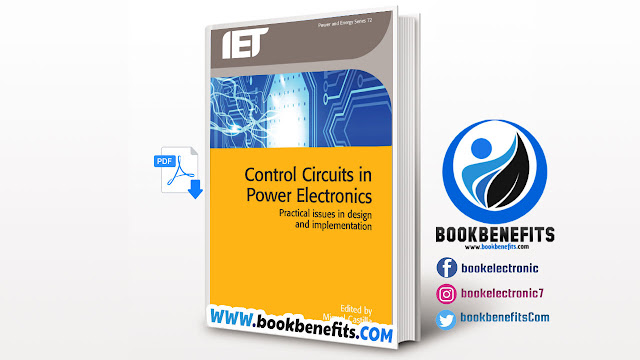Control Circuits in Power Electronics Practical Issues in Design and Implementation Download PDF
Control Circuits in Power Electronics Practical Issues in Design and Implementation PDF
Picture Of The Book :
About Of The Book :
This book presents control circuits for power electronics converters. It is divided into three parts—analog control circuits, digital control circuits, and new trends in control circuits. The first part provides an overview of the applications of power electronics in which analog control circuits currently show superior performance. This part includes the essential background to enable a graduate engineer to design an analog control circuit for a power converter, current topics of research interest within the area, and detailed descriptions of practical issues related to the design and implementation of control circuits. Design examples for DC/DC converters, single-phase rectifiers with unity power factor, and three-phase grid-connected inverters for photovoltaic applications are presented in this part. The second part presents a wide range of control solutions based on digital circuits (hardwired custom-designed digital integrated circuits and software-based architectures including microcontrollers, field programmable gate arrays, and digital signal processors), which today represent the leading technology in a broad range of applications. Digital control solutions for DC/DC converters for renewable energy processing, electronic ballasts for high-intensity discharge lamps, three-phase rectifiers with unity power factor, three-phase voltage-sourced inverters, and multilevel converters are the focus. This part will provide essential reading for anyone involved in research in the design and implementation of control algorithms and modulation schemes using digital control circuits. The final part covers emerging topics in control circuit technology and new trends in control circuits for power electronics applications. A diverse range of studies is considered from integrated switched capacitor converters to dual-core digital signal processors which include control and communication functions for networked control applications, and from intelligent drive units that enable advanced control of power switches to control design using computational intelligence techniques such as genetic algorithms and ant colonization optimization. The Editor would like to thank all the contributors for their excellent work and cooperation in the preparation of this book. He further acknowledges with gratitude the assistance of the editorial and production staff at the Institution of Engineering and Technology.
Power electronics is an energy conversion technology that enables efficient and fast processing of electrical power. In power electronics, control circuits are key elements in the operation and performance of power converters. The control circuits have a major influence on the characteristics of the power converters such as inefficiency and steady-state errors (static properties) as well as in transient response, stability, and robustness (dynamic properties). The fundamental elements of a control circuit include the sensing unit, the control algorithm, and the modulation scheme. The sensing unit captures the current state of the power converter and provides the input signals to the control algorithm in the suitable form to be processed. The control algorithm makes decisions in accordance with the defined control objectives and the current state of the converter measured by the sensing unit. The modulation scheme performs the actions decided by the control algorithm by providing the firing pulses to the converter switching devices. In addition to these elements, fabrication technology (i.e., analog or digital control circuits) also has a large impact on the static and dynamic characteristics of power converters. For instance, fast transient response and flexibility of operation are well-known characteristics that can be attributed directly to the control circuit technology (analog and digital technologies, respectively).
Contents Of The Book :
Part I Analogue control circuits 1
1 PWM-based sliding mode control schemes for DC/DC power converters
2 Synthetic-ripple hysteretic controllers for DC/DC converters
3 One-cycle controlled power inverters
Part II Digital control circuits 77
4 Digital PWM control of high-frequency DC-DC switched-mode power converters
5 Microcontroller-based electronic ballasts for high-intensity discharge lamps
6 FPGA-based controllers for direct sliding mode control of PWM boost rectifiers
7 DSP controllers for three-phase unity-power-factor rectifiers
8 DSP controllers for grid-connected three-phase voltage-sourced inverters
9 FPGA-DSP controllers for DC-DC converters in renewable energy applications
10 Multilevel converters: topologies, modulation and control
Part III New trends in control circuits for power electronics 307
11 State-of-the-art intelligent gate drivers for IGBT power modules – monitoring, control and management at the heart of power converters
12 Control of integrated switched capacitor power converters
13 DSP-based natural frame control schemes for three-phase unity power factor rectifiers
14 Dual-core DSP for control and communication in AC microgrids
15 Use of computational intelligence for designing power electronics converters
Information Of The Book :
Title: Control Circuits in Power Electronics Practical Issues in Design and Implementation Download PDF
Language: English.
Size: 20 MB
Pages: 457
Year : 2016
Format: PDF
Author :

